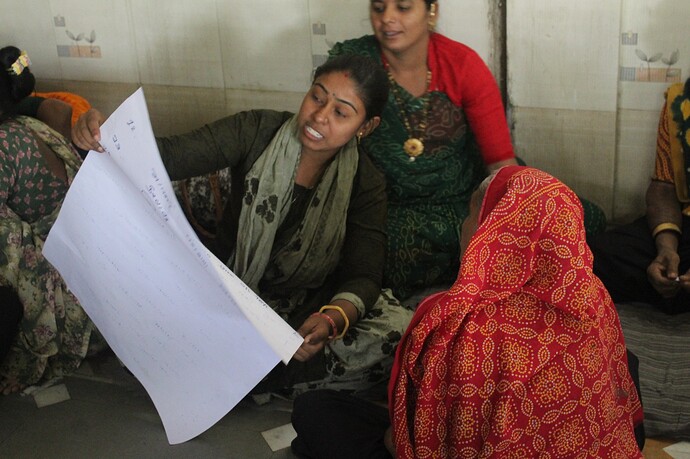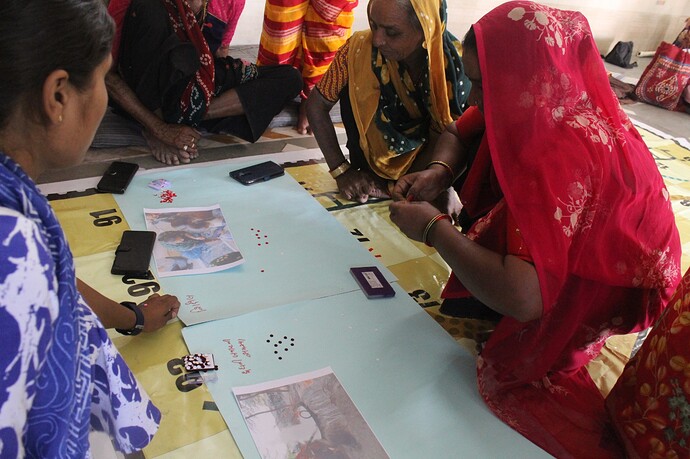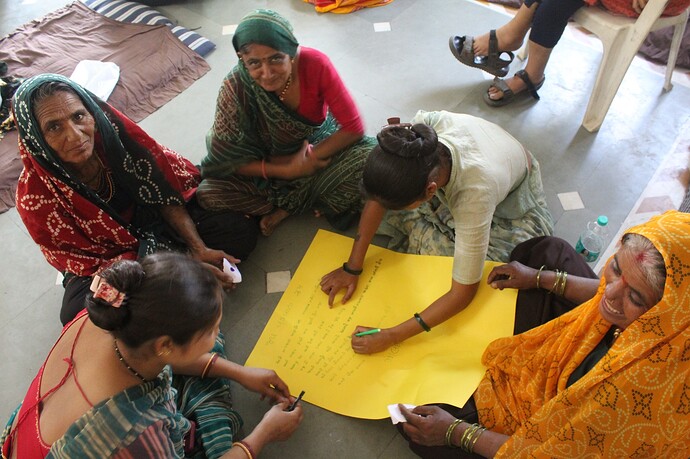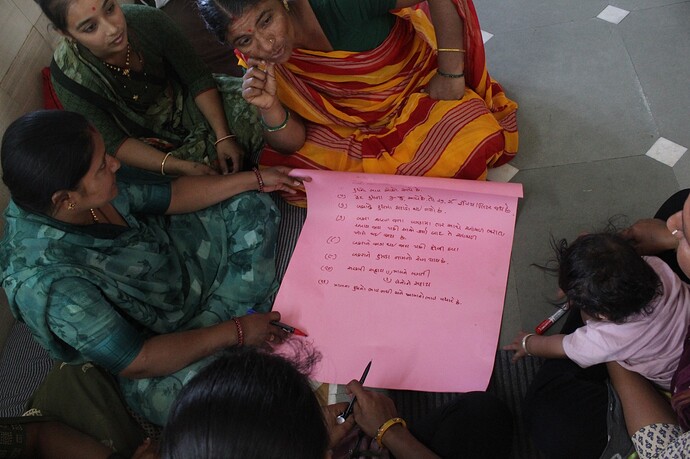Text and photos by Malaika Mathew Chawla
Sahjeevan team members: Kiran Patel, Bharti Nanjar, Krupa Dholakia, Ankita Kathecha, Savita Batta, Suresh Kuvadiya
Our work in the Surendranagar district of Gujarat involves strengthening the livelihoods of sheep and goat pastoralists and the conservation of savanna grasslands and biodiversity alongside communities. On 24th March, women from the Rabari and Bharwad communities gathered in Chotila. 30 women representing three blocks- Chotila, Sayla and Muli, came together to discuss issues surrounding pastoralism and to propose some small actionable steps forward.
There was a group exercise where women discussed amongst themselves and drew out a list of challenges they encounter in their livelihoods.
Here is a list of challenges:
- There is no formal collection of goat milk. Since there is no separate goat dairy, pastoralists do not get a proper price for goat milk, and have to sell a mix of bovine milk and goat milk. This is the biggest issue affecting sheep and goat pastoralists across Saurashtra.
- The current generation of pastoralists are taking up jobs like truck driving and are choosing such professions over pastoralism. One reason given for this shift is that families do not want to get their daughters married to men who are practising pastoralism, which is looked down upon and also considered as a life of hardship (“Chokri kon aapse”- Who will give us their daughters?"). On this point, many women agreed that the ritual of ‘giving away daughters’ is regressive and that women are not property to be given away. There were discussion about how the community has tried to do away with regressive traditions like the bride-price but people still insist on following it.
- Women from Piyava and Reshamiya village in Chotila said that there was no drinkng water in their villages during the summer season.
- Buying nutritional cattle feed (made of cottonseeds) is expensive and takes away from the income generated from milk.
- When families migrate for seasonal grazing and travel long distances, children’s education gets compromised.
- Grazing lands are no longer ‘open’, like they use to be. Many grazing lands have now been converted into Reserved Forests and pastoralists have to pay heavy fines for grazing and are often ill-treated by the Forest Department.
- Conflict with leopards is a problem as domestic animals (sheep, goats, young cows and buffaloes) are attacked on and often die.
- Due to climate change, the rate of rainfall has decreased and has also become unseasonal, affecting the availability of forage.
- New livestock diseases are emerging that pastoralists do not have information about. Private livestock doctors are expensive and often times the government livestock services do not reach animals in need.




